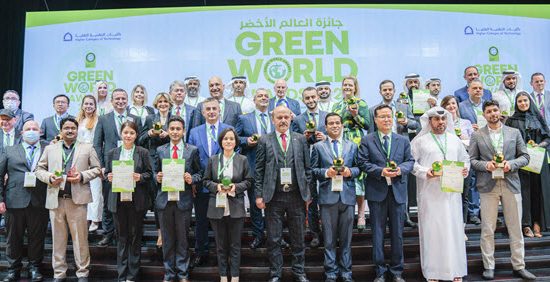INTERNATIONAL. Oil production from the Organization of the Petroleum Exporting Countries (OPEC) totaled 31.11 million barrels per day (b/d) in May, up 180,000 b/d from April and the group’s highest monthly volume since October 2012, according to the latest Platts survey of OPEC and oil industry officials and analysts.
“OPEC’s communique after the June 5 meeting mentioned that members had been urged to adhere to its production ceiling,” said Margaret McQuaile, senior correspondent for Platts, a leading global provider of energy and commodities information.
“That’s something of a tall order, given that there are no quotas and that the 30 million b/d ceiling is supposed to cover production from Iraq, which hasn’t been part of OPEC’s production management system for years. With market share now pretty much the main theme – for the bigger players, at least – it seems likely that, for the time being, the only cuts in output will be involuntary ones.”
In terms of production increases in May, Saudi Arabia led the upward charge with a 150,000 b/d-increase to 10.25 million b/d, while Angola and Iraq boosted output by 70,000 b/d and 50,000 b/d, respectively. Smaller increments came from Angola, Algeria, the United Arab Emirates (UAE) and Venezuela.
These extra volumes, which totaled 340,000 b/d, were partly offset by a 90,000 b/d-drop in Libyan production to 430,000 b/d and smaller dips in Iran, Kuwait, Nigeria and Qatar.
Saudi Arabia looks set to keep output high in the near term. Arriving in Vienna last week for OPEC talks, Saudi oil minister Ali Naimi said the kingdom’s market share policy was working, with oil demand picking up and supply slowing. However, he said, although world oil markets are stabilizing a rebalancing will take time.
Angolan production recovered after a dip in April that was linked largely to problems at the Plutonio field that have since been resolved. There was also a short force majeure on liftings of Saturno between late April and early May. T
he government has been striving to maximize output levels but has been struggling with technical problems that have affected production in recent months. The force majeure on Saturno was the second in two months. In Vienna, Angolan oil minister Jose Maria Botelho de Vasconcelos estimated current output at 1.79 million b/d.
Despite ongoing political and infrastructural challenges, Iraq has continued to push out more oil, partly thanks to higher output from the south and partly to a deal with semi-autonomous Kurdistan late last year that has enabled Baghdad to resume exports from Turkish Mediterranean port Ceyhan via the Kurdistan Regional Government’s pipeline system.
Output from the Wafra field in the Neutral Zone between Saudi Arabia and Kuwait remains shut in after a maintenance program that operator Chevron said on May 11 would take two weeks. Another Neutral Zone field, Khafji, has been shut in since October last year.
Kuwait said at the time that the field had been shut by Saudi Arabia for “technical reasons,” but analysts said they believed Riyadh’s decision to close Khafji signaled deeper problems between the two countries.
SWINGS
Libyan production continues to be defined by large swings up and down as the country’s situation remains mired in political chaos. After several months of increases, Libyan production went back into reverse with a 90,000 b/d drop to 430,000 b/d.
The May estimate leaves OPEC pumping more than 1 million b/d in excess of the 30 million b/d ceiling that ministers rubber-stamped on June 5 in Vienna and some 1.8 million b/d above the 29.3 million b/d that OPEC sees as the call on its crude this year.
Earlier this week, OPEC said in a regular monthly report that it expected the current oversupply on world oil markets to ease in the months ahead, with world oil demand picking up pace in the second half of the year and non-OPEC supply showing a decline.
Non-OPEC oil is projected to slip from roughly 57.4 million b/d in the first half of 2015 to 56.82 million b/d in the third quarter and 56.97 million b/d in the fourth, attributable to low oil price expectations, declining numbers of active rigs in North America and insufficient investment in upstream projects.
OPEC’s 30 million b/d ceiling has been in place since January 2012. It does not include individual country quotas.
Additional information on oil, energy and related information may be found on the Platts website at www.platts.com.
About Platts:
Founded in 1909, Platts is a leading global provider of energy, petrochemicals, metals and agriculture information and a premier source of benchmark prices for the physical and futures markets. Platts’ news, pricing, analytics, commentary and conferences help customers make better-informed trading and business decisions and help the markets operate with greater transparency and efficiency.
Customers in more than 150 countries benefit from Platts’ coverage of the biofuels, carbon emissions, coal, electricity, oil, natural gas, metals, nuclear power, petrochemical, shipping and sugar markets. A division of McGraw Hill Financial (NYSE: MHFI), Platts is based in London with more than 1000 employees in more than 15 offices worldwide.
Additional information is available at www.platts.com.
About McGraw Hill Financial:
McGraw Hill Financial (NYSE: MHFI) is a leading financial intelligence company providing the global capital and commodity markets with independent benchmarks, credit ratings, portfolio and enterprise risk solutions, and analytics. The Company’s iconic brands include: Standard & Poor’s Ratings Services, S&P Capital IQ, S&P Dow Jones Indices, Platts, CRISIL and J.D. Power. The Company has approximately 17,000 employees in 30 countries.
Additional information is available at www.mhfi.com.
This entry passed through the Full-Text RSS service – if this is your content and you’re reading it on someone else’s site, please read the FAQ at fivefilters.org/content-only/faq.php#publishers.








